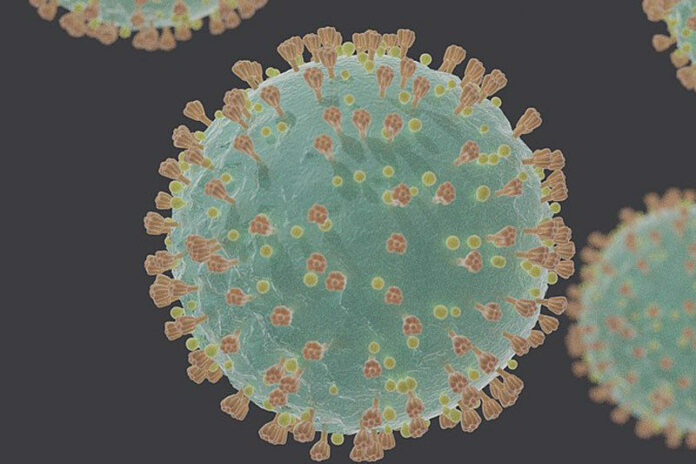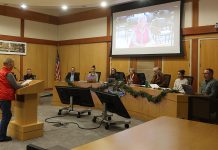Gov. Gavin Newsom announced a new set of stay-at-home orders and restrictions on Dec. 3, that threaten to significantly impact the holiday season. The new order is based on ICU bed capacity that is narrowing significantly, with cases threatening to overwhelm the healthcare system, and is based on regions rather than counties.
The order
The new Regional Stay Home Order will go into effect within 48 hours in regions with less than 15% ICU availability. It prohibits private gatherings of any size, closes most businesses except for critical infrastructure and retail, and requires 100% masking and physical distancing in all others.
The order will remain in effect for at least three weeks and, after that period, will be lifted when a region’s projected ICU capacity meets or exceeds 15%. This will be assessed on a weekly basis after the initial three week period.
The state released a map of five regions and their current ICU capacity, as well as projected dates when regions will fall below the 15% threshold. The regions and the counties in them are:
Northern California: Del Norte, Glenn, Humboldt, Lake, Lassen, Mendocino, Modoc, Shasta, Siskiyou, Tehama, Trinity
Bay Area: Alameda, Contra Costa, Marin, Monterey, Napa, San Francisco, San Mateo, Santa Clara, Santa Cruz, Solano, Sonoma
Greater Sacramento: Alpine, Amador, Butte, Colusa, El Dorado, Nevada, Placer, Plumas, Sacramento, Sierra, Sutter, Yolo, Yuba
San Joaquin Valley: Calaveras, Fresno, Kern, Kings, Madera, Mariposa, Merced, San Benito, San Joaquin, Stanislaus, Tulare, Tuolumne
Southern California: Imperial, Inyo, Los Angeles, Mono, Orange, Riverside, San Bernardino, San Diego, San Luis Obispo, Santa Barbara, Ventura
All the regions except for the Bay Area are predicted to hit the 15% threshold within the week, defined as “early December,” while the Bay Area is projected to hit that benchmark in mid-December.
Sonoma County as of 11:45 p.m. on Dec. 1 has only three ICU beds available out of a total of 82, for an available capacity of 3.65%. On Nov. 30, the state said that the Bay Area had 72% of its ICU beds occupied (28% availability), with a prediction that Bay Area ICU beds would reach 91% capacity by Dec. 24.
While the order instructs people to stay at home as much as possible to limit the mixing with other households that can lead to COVID-19 spread, it allows access to (and travel for) critical services and allows outdoor activities “to preserve Californians’ physical and mental health.”
In any region that triggers a Regional Stay Home Order, the following sectors must close:
- Indoor and outdoor playgrounds
- Indoor recreational facilities
- Hair salons and barbershops
- Personal care services
- Museums, zoos and aquariums
- Movie theaters
- Wineries
- Bars, breweries and distilleries
- Family entertainment centers
- Cardrooms and satellite wagering
- Limited services
- Live audience sports
- Amusement parks
The following sectors will have additional modifications in addition to 100% masking and physical distancing:
- Outdoor recreational facilities: Allow outdoor operation only without any food, drink or alcohol sales. Additionally, overnight stays at campgrounds will not be permitted.
- Retail: Allow indoor operation at 20% capacity with entrance metering and no eating or drinking in the stores. Additionally, special hours should be instituted for seniors and others with chronic conditions or compromised immune systems.
- Shopping centers: Allow indoor operation at 20% capacity with entrance metering and no eating or drinking in the stores. Additionally, special hours should be instituted for seniors and others with chronic conditions or compromised immune systems.
- Hotels and lodging: Allow to open for critical infrastructure support only.
- Restaurants: Allow only for take-out, pick-up, or delivery.
- Offices: Allow remote only except for critical infrastructure sectors where remote working is not possible.
- Places of worship and political expression: Allow outdoor services only.
- Entertainment production including professional sports: Allow operation without live audiences. Additionally, testing protocol and “bubbles” are highly encouraged.
The following sectors are allowed to remain open when a remote option is not possible with appropriate infectious disease preventative measures including 100% masking and physical distancing:
- Critical infrastructure
- Schools that are already open for in-person learning
- Non-urgent medical and dental care
- Childcare and pre-K
Local thoughts
Numbers in Sonoma County have been improving, but in a briefing on Dec. 2, Health Officer Dr. Sundari Mase indicated she believes we won’t be immune to the surge being felt across the country.
As of Dec. 1 at 11:45 p.m. the unadjusted case rate is 14.2 per 100,000, with an adjusted rate of 8.8. (The adjusted rated is created by applying a multiplier based on the amount of testing a county is doing.) Our test positivity rate is 3.3%. These numbers are a seven-day average, with a seven-day lag.
In other words, they likely don’t yet incorporate any numbers from Thanksgiving travelers and gatherings.
“It is hard to predict how much it will go up, but it is something we are monitoring carefully with the epidemiology team to see exposures due to gatherings at Thanksgiving,” said health program manager Kate Pack. “With previous gatherings in general, such as holidays, we’ve seen an increase. It’s something we will provide further information on as case interviews come in.”
While the governor had not yet made his announcement when Mase gave her briefing, she did warn residents that challenging times were ahead.
“We’re doing better than the rest of the state, but we are entering a very challenging phase of the pandemic …. Case rates around us are rising and it’s a sign,” she said. “We need to protect people who keep us healthy and safe and the other essential workers. If enough people make the right choices we’ll meet challenge head on,” she said.
And, she stated that county would abide by whatever orders the governor announced.
Vaccine: when, how, who
In their Dec. 2 briefing Mase and her deputy health officer Kismet Baldwin answered questions regarding forthcoming vaccines.
The county will follow state guidelines for distribution, which in turn will be following federal ones. The first doses are expected to arrive in California mid-December, and according to Baldwin will likely be distributed primarily through local health care organizations, hospitals and clinics.
According to the California Department of Health, “CDPH will determine allocations for California counties in accordance to a prioritization framework that is under development and will be additionally based on guidance from the federal government. CDPH and community-based organizations and other partners will review and incorporate national prioritization recommendations from the federal Advisory Committee on Immunization Practices and the National Academy of Medicine to guide prioritization for California.”
Federal agencies have announced that they believe priority for the first round of vaccinations should go to healthcare workers and individuals living in congregate care housing, such as senior care facilities.









